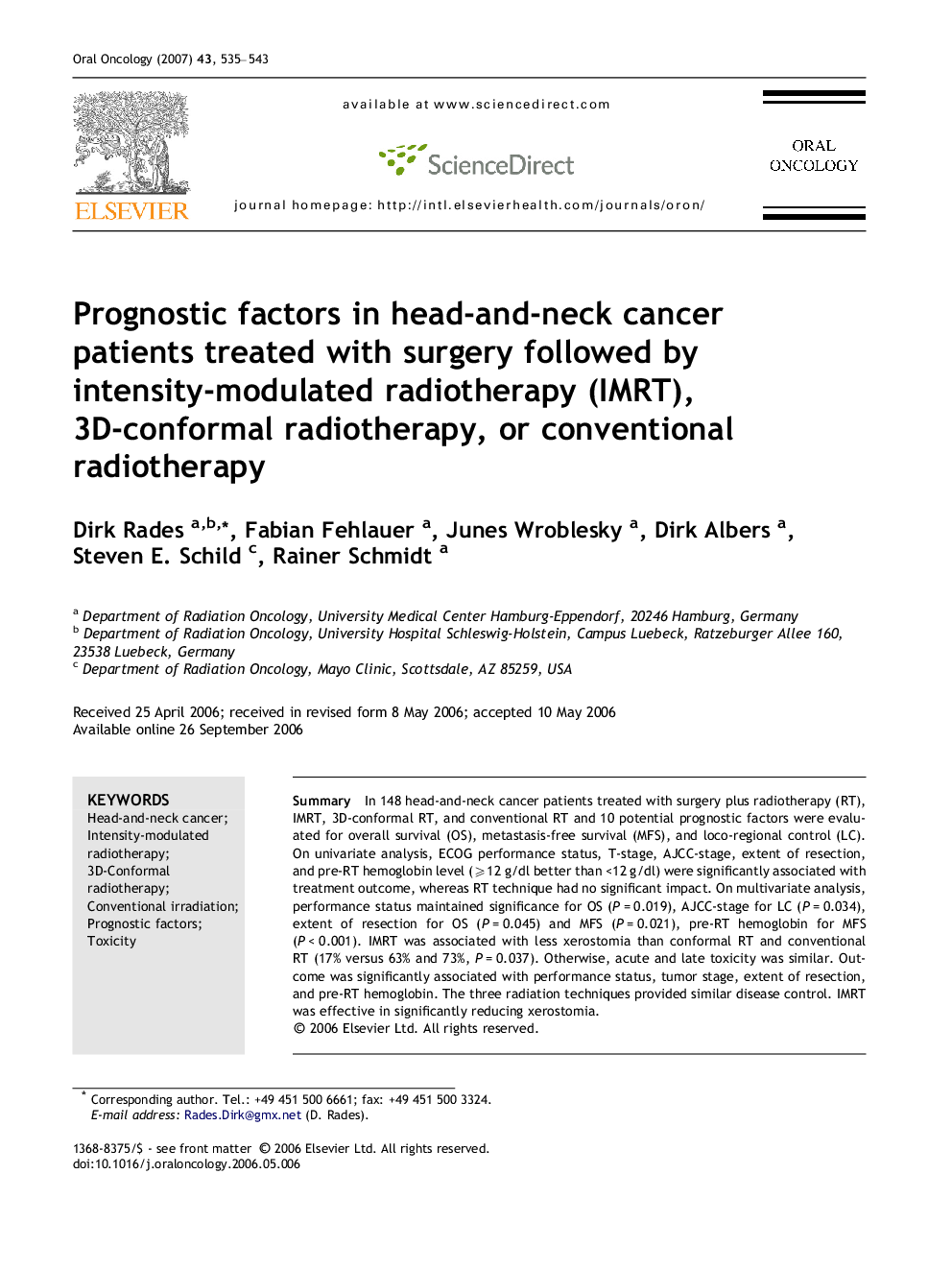| Article ID | Journal | Published Year | Pages | File Type |
|---|---|---|---|---|
| 3165769 | Oral Oncology | 2007 | 9 Pages |
SummaryIn 148 head-and-neck cancer patients treated with surgery plus radiotherapy (RT), IMRT, 3D-conformal RT, and conventional RT and 10 potential prognostic factors were evaluated for overall survival (OS), metastasis-free survival (MFS), and loco-regional control (LC). On univariate analysis, ECOG performance status, T-stage, AJCC-stage, extent of resection, and pre-RT hemoglobin level (⩾12 g/dl better than <12 g/dl) were significantly associated with treatment outcome, whereas RT technique had no significant impact. On multivariate analysis, performance status maintained significance for OS (P = 0.019), AJCC-stage for LC (P = 0.034), extent of resection for OS (P = 0.045) and MFS (P = 0.021), pre-RT hemoglobin for MFS (P < 0.001). IMRT was associated with less xerostomia than conformal RT and conventional RT (17% versus 63% and 73%, P = 0.037). Otherwise, acute and late toxicity was similar. Outcome was significantly associated with performance status, tumor stage, extent of resection, and pre-RT hemoglobin. The three radiation techniques provided similar disease control. IMRT was effective in significantly reducing xerostomia.
